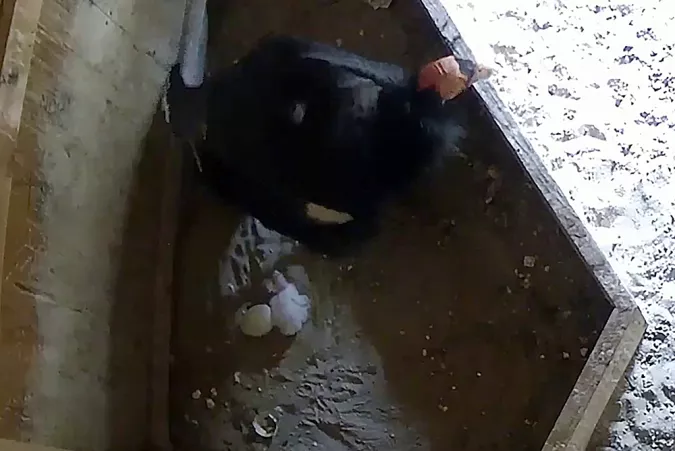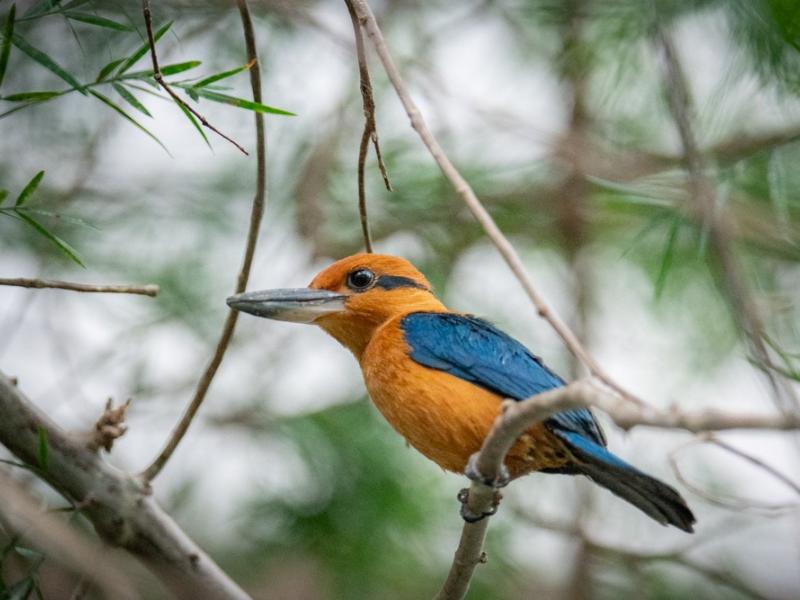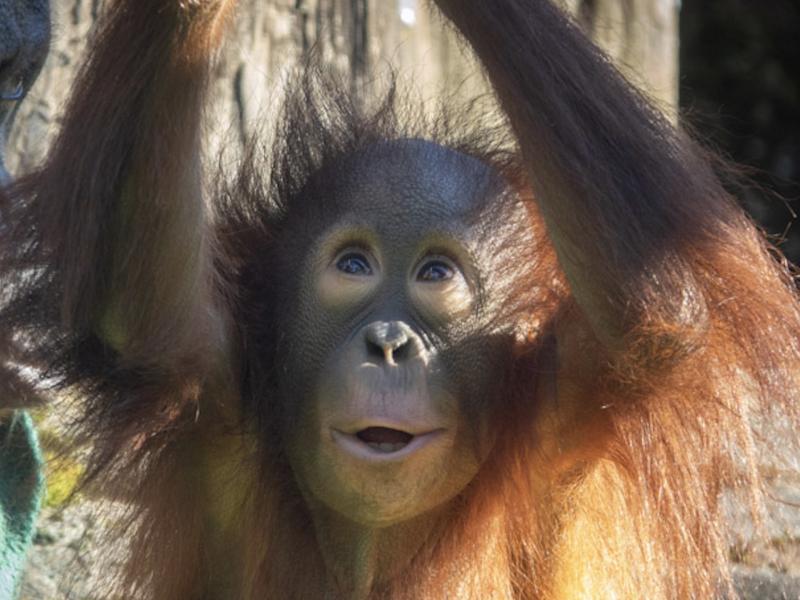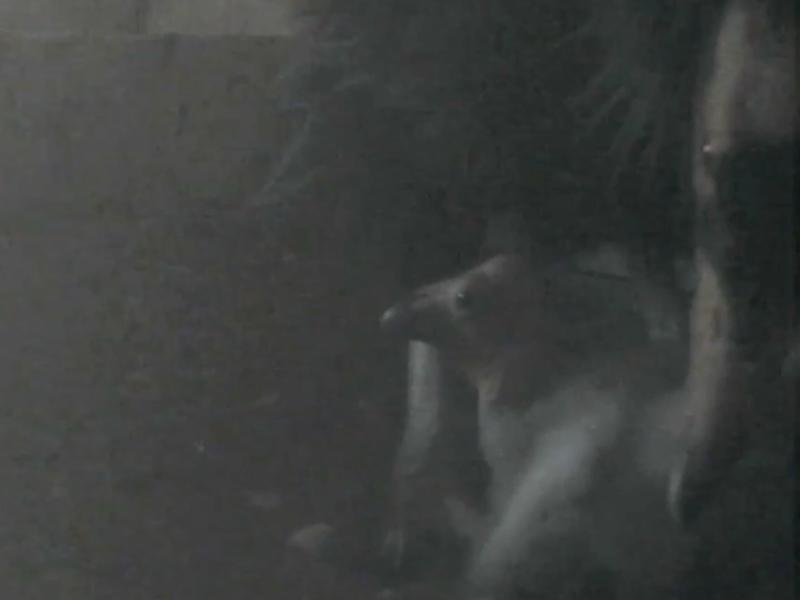First condor chick of season arrives with a surprise bonus
Condor mom amazes keepers by laying a second egg just as her first one is hatching
The first California condor chick of 2021 arrived in spectacular and surprising fashion this week at the Oregon Zoo's Jonsson Center for Wildlife Conservation, kicking off what looks to be an exceptional year in the effort to save this critically endangered species.
The fuzzy new arrival hatched on March 13 to condor parents No. 765 and No. 55, who had produced the first egg of 2021 back on Jan. 15 — that much was expected. But when keepers got their first glimpse of the chick, they noticed something else in the nest box beside it: a second egg.
"That was very surprising," said Dr. Kelly Flaminio, who oversees the zoo's condor recovery efforts. "Condors typically lay only one egg a year — as far as we know, this has never happened before."

In certain cases, Flaminio noted, keepers will remove an egg from the nest box early in the season, thus encouraging a particular condor to lay a second time. The process, known as "double clutching," has helped increase condor numbers and improve genetic diversity in the population since the recovery program began.
That's not what happened this time though, according to Flaminio.
"Apparently, No. 765 double-clutched herself," she said. "She laid a second egg right as her first one was hatching. We've never seen anything like it."
So far, the new parents are doing a fine job caring for both egg and chick, though keepers may eventually transfer the egg to hatch under another condor pair and be foster-raised.
"Condor chicks require a tremendous amount of parental investment," Flaminio said. "These two are experienced parents, but they've never raised 'twins' before."
Since mid-January, condors at the Jonsson Center have been laying the groundwork for species recovery one egg at a time. In addition to the new hatchling, 11 other eggs have been laid this year (with five confirmed to be fertile) and at least one more is expected soon. To aid in the zoo's recovery efforts, FLIR visible security cameras are providing improved views into nesting areas, helping staff better monitor the health of chicks and parents.
The California condor was one of the original animals included on the 1973 Endangered Species Act and is classified as critically endangered. In 1982, only 22 individuals remained in the wild and by 1987, the last condors were brought into human care in an attempt to save the species from extinction. Thanks to recovery programs like the Oregon Zoo's, the world's California condor population now totals around 500 birds, most of which are flying free.
The Oregon Zoo's condor recovery efforts take place at the Jonsson Center for Wildlife Conservation, located in rural Clackamas County on Metro-owned open land. The remoteness of the facility minimizes the exposure of young condors to people, increasing the chances for captive-hatched birds to survive and breed in the wild.
Recent upgrades and new equipment at the Jonsson Center were made possible through a grant from the Avangrid Foundation and support from the Oregon Zoo Foundation's $8.5 million Heart of the Oregon Zoo campaign. To learn more or to make a gift, call 503-220-2493 or email foundation@oregonzoo.org.
More than 70 chicks have hatched at the Jonsson Center since 2003, and more than 50 Oregon Zoo-reared birds have gone out to field pens for release. Several eggs laid by Oregon Zoo condors have been placed in wild nests to hatch. California condor breeding programs are also operated at San Diego Zoo's Wild Animal Park, the Los Angeles Zoo and the Peregrine Fund's World Center for Birds of Prey in Idaho.
More News

Zoo welcomes ultra-rare sihek kingfishers
The Oregon Zoo is home to many critically endangered species, but perhaps none as rare as its newest arrivals: a trio of sihek kingfishers.April 25, 2024

Jolene turns 2: Zoo to celebrate orangutan's 2nd birthday
The littlest member of the orangutan family is celebrating a big milestone this week: Jolene will turn 2 on Saturday.April 12, 2024

Seven chicks and counting: Zoo welcomes first condors of 2024
Seven fluffy chicks hatched last month at the Oregon Zoo’s Jonsson Center for Wildlife Conservation.April 5, 2024

